Shelly Vishwakarma
Would You Trust an AI Doctor? Building Reliable Medical Predictions with Kernel Dropout Uncertainty
Apr 16, 2024Abstract:The growing capabilities of AI raise questions about their trustworthiness in healthcare, particularly due to opaque decision-making and limited data availability. This paper proposes a novel approach to address these challenges, introducing a Bayesian Monte Carlo Dropout model with kernel modelling. Our model is designed to enhance reliability on small medical datasets, a crucial barrier to the wider adoption of AI in healthcare. This model leverages existing language models for improved effectiveness and seamlessly integrates with current workflows. We demonstrate significant improvements in reliability, even with limited data, offering a promising step towards building trust in AI-driven medical predictions and unlocking its potential to improve patient care.
BayesJudge: Bayesian Kernel Language Modelling with Confidence Uncertainty in Legal Judgment Prediction
Apr 16, 2024Abstract:Predicting legal judgments with reliable confidence is paramount for responsible legal AI applications. While transformer-based deep neural networks (DNNs) like BERT have demonstrated promise in legal tasks, accurately assessing their prediction confidence remains crucial. We present a novel Bayesian approach called BayesJudge that harnesses the synergy between deep learning and deep Gaussian Processes to quantify uncertainty through Bayesian kernel Monte Carlo dropout. Our method leverages informative priors and flexible data modelling via kernels, surpassing existing methods in both predictive accuracy and confidence estimation as indicated through brier score. Extensive evaluations of public legal datasets showcase our model's superior performance across diverse tasks. We also introduce an optimal solution to automate the scrutiny of unreliable predictions, resulting in a significant increase in the accuracy of the model's predictions by up to 27\%. By empowering judges and legal professionals with more reliable information, our work paves the way for trustworthy and transparent legal AI applications that facilitate informed decisions grounded in both knowledge and quantified uncertainty.
MDPose: Human Skeletal Motion Reconstruction Using WiFi Micro-Doppler Signatures
Jan 11, 2022

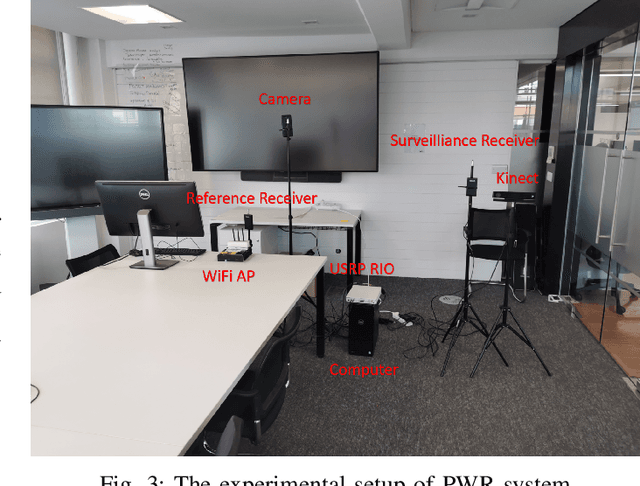
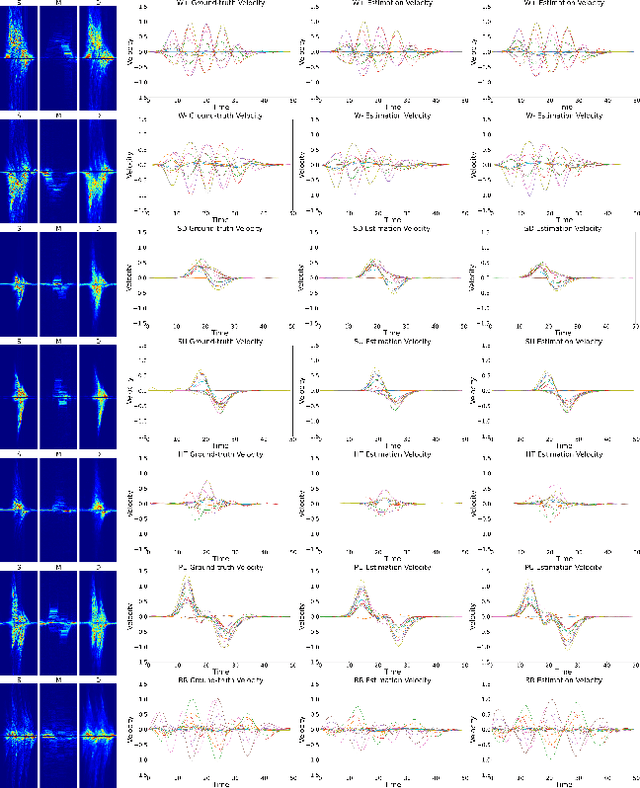
Abstract:Motion tracking systems based on optical sensors typically often suffer from issues, such as poor lighting conditions, occlusion, limited coverage, and may raise privacy concerns. More recently, radio frequency (RF)-based approaches using commercial WiFi devices have emerged which offer low-cost ubiquitous sensing whilst preserving privacy. However, the output of an RF sensing system, such as Range-Doppler spectrograms, cannot represent human motion intuitively and usually requires further processing. In this study, MDPose, a novel framework for human skeletal motion reconstruction based on WiFi micro-Doppler signatures, is proposed. It provides an effective solution to track human activities by reconstructing a skeleton model with 17 key points, which can assist with the interpretation of conventional RF sensing outputs in a more understandable way. Specifically, MDPose has various incremental stages to gradually address a series of challenges: First, a denoising algorithm is implemented to remove any unwanted noise that may affect the feature extraction and enhance weak Doppler signatures. Secondly, the convolutional neural network (CNN)-recurrent neural network (RNN) architecture is applied to learn temporal-spatial dependency from clean micro-Doppler signatures and restore key points' velocity information. Finally, a pose optimising mechanism is employed to estimate the initial state of the skeleton and to limit the increase of error. We have conducted comprehensive tests in a variety of environments using numerous subjects with a single receiver radar system to demonstrate the performance of MDPose, and report 29.4mm mean absolute error over all key points positions, which outperforms state-of-the-art RF-based pose estimation systems.
OPERAnet: A Multimodal Activity Recognition Dataset Acquired from Radio Frequency and Vision-based Sensors
Oct 08, 2021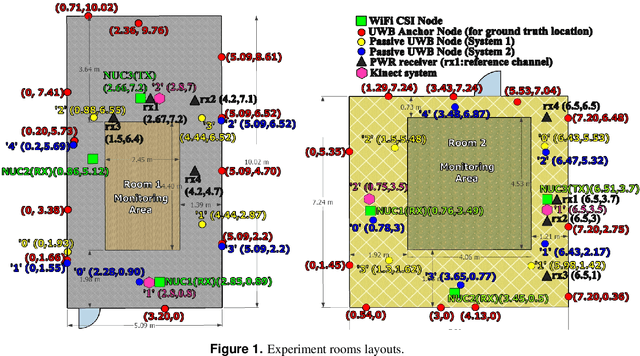
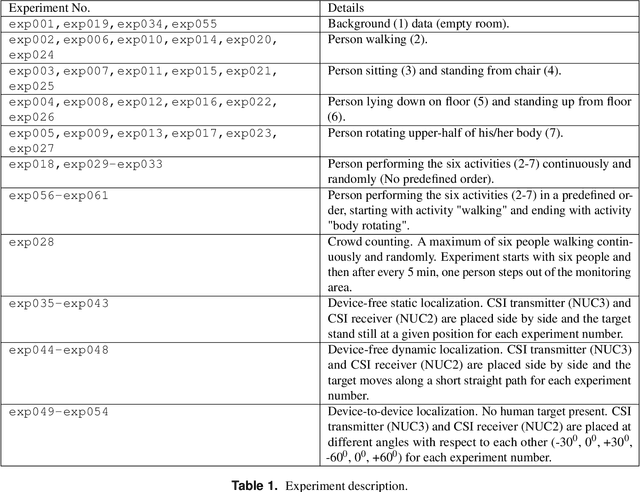
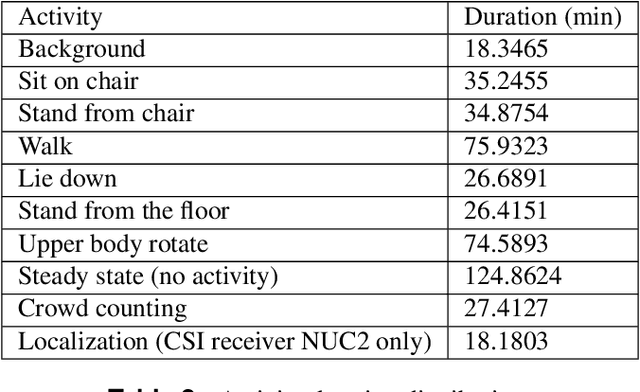
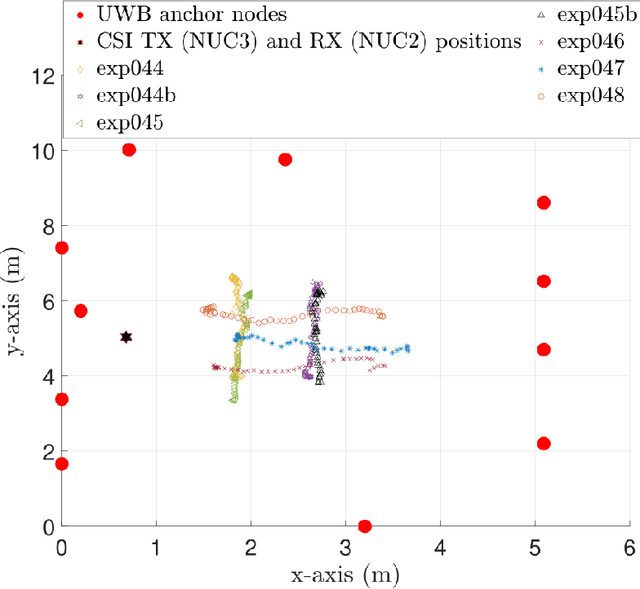
Abstract:This paper presents a comprehensive dataset intended to evaluate passive Human Activity Recognition (HAR) and localization techniques with measurements obtained from synchronized Radio-Frequency (RF) devices and vision-based sensors. The dataset consists of RF data including Channel State Information (CSI) extracted from a WiFi Network Interface Card (NIC), Passive WiFi Radar (PWR) built upon a Software Defined Radio (SDR) platform, and Ultra-Wideband (UWB) signals acquired via commercial off-the-shelf hardware. It also consists of vision/Infra-red based data acquired from Kinect sensors. Approximately 8 hours of annotated measurements are provided, which are collected across two rooms from 6 participants performing 6 daily activities. This dataset can be exploited to advance WiFi and vision-based HAR, for example, using pattern recognition, skeletal representation, deep learning algorithms or other novel approaches to accurately recognize human activities. Furthermore, it can potentially be used to passively track a human in an indoor environment. Such datasets are key tools required for the development of new algorithms and methods in the context of smart homes, elderly care, and surveillance applications.
Neural Style Transfer Enhanced Training Support For Human Activity Recognition
Jul 27, 2021
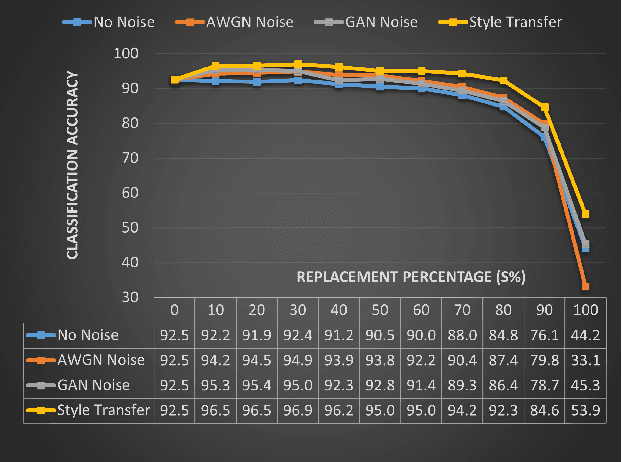
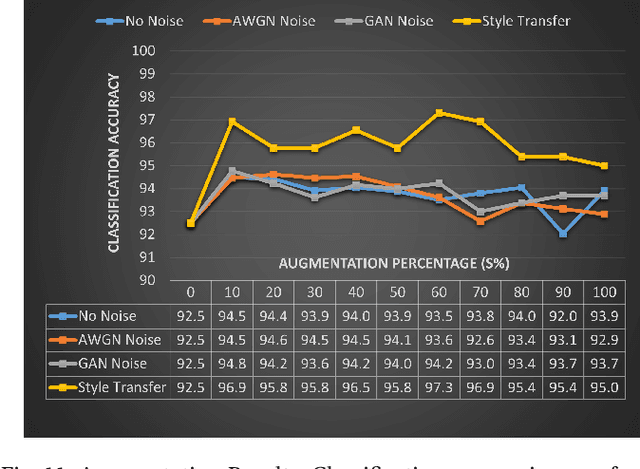

Abstract:This work presents an application of Integrated sensing and communication (ISAC) system for monitoring human activities directly related to healthcare. Real-time monitoring of humans can assist professionals in providing healthy living enabling technologies to ensure the health, safety, and well-being of people of all age groups. To enhance the human activity recognition performance of the ISAC system, we propose to use synthetic data generated through our human micro-Doppler simulator, SimHumalator to augment our limited measurement data. We generate a more realistic micro-Doppler signature dataset using a style-transfer neural network. The proposed network extracts environmental effects such as noise, multipath, and occlusions effects directly from the measurement data and transfers these features to our clean simulated signatures. This results in more realistic-looking signatures qualitatively and quantitatively. We use these enhanced signatures to augment our measurement data and observe an improvement in the classification performance by 5% compared to no augmentation case. Further, we benchmark the data augmentation performance of the style transferred signatures with three other synthetic datasets -- clean simulated spectrograms (no environmental effects), simulated data with added AWGN noise, and simulated data with GAN generated noise. The results indicate that style transferred simulated signatures well captures environmental factors more than any other synthetic dataset.
FMNet: Latent Feature-wise Mapping Network for Cleaning up Noisy Micro-Doppler Spectrogram
Jul 09, 2021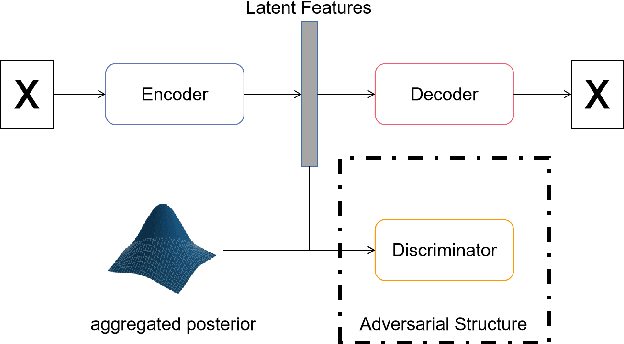

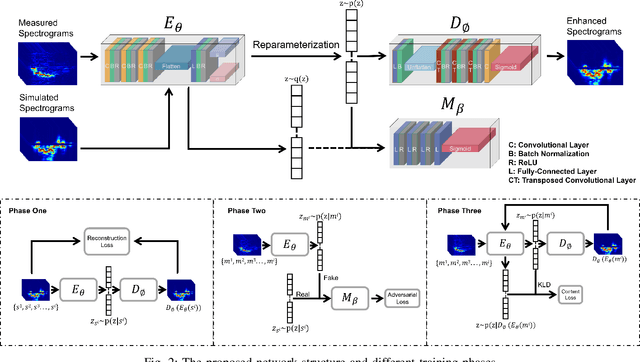
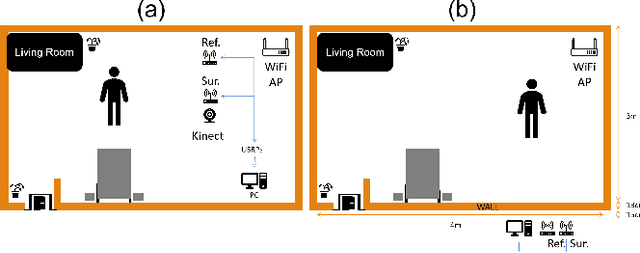
Abstract:Micro-Doppler signatures contain considerable information about target dynamics. However, the radar sensing systems are easily affected by noisy surroundings, resulting in uninterpretable motion patterns on the micro-Doppler spectrogram. Meanwhile, radar returns often suffer from multipath, clutter and interference. These issues lead to difficulty in, for example motion feature extraction, activity classification using micro Doppler signatures ($\mu$-DS), etc. In this paper, we propose a latent feature-wise mapping strategy, called Feature Mapping Network (FMNet), to transform measured spectrograms so that they more closely resemble the output from a simulation under the same conditions. Based on measured spectrogram and the matched simulated data, our framework contains three parts: an Encoder which is used to extract latent representations/features, a Decoder outputs reconstructed spectrogram according to the latent features, and a Discriminator minimizes the distance of latent features of measured and simulated data. We demonstrate the FMNet with six activities data and two experimental scenarios, and final results show strong enhanced patterns and can keep actual motion information to the greatest extent. On the other hand, we also propose a novel idea which trains a classifier with only simulated data and predicts new measured samples after cleaning them up with the FMNet. From final classification results, we can see significant improvements.
SimHumalator: An Open Source WiFi Based Passive Radar Human Simulator For Activity Recognition
Mar 02, 2021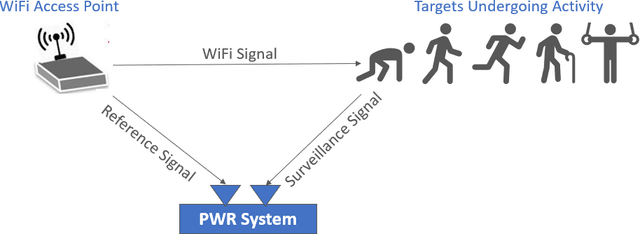
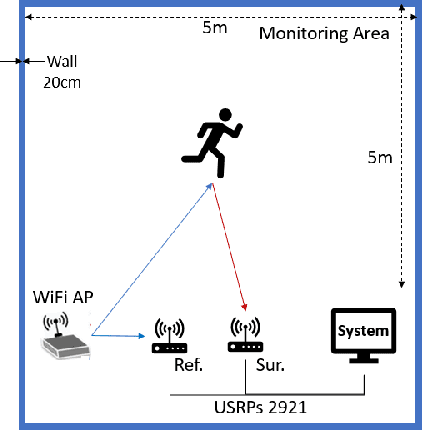

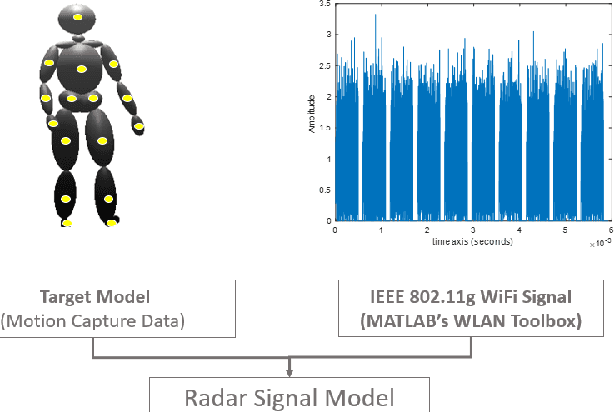
Abstract:This work presents a simulation framework to generate human micro-Dopplers in WiFi based passive radar scenarios, wherein we simulate IEEE 802.11g complaint WiFi transmissions using MATLAB's WLAN toolbox and human animation models derived from a marker-based motion capture system. We integrate WiFi transmission signals with the human animation data to generate the micro-Doppler features that incorporate the diversity of human motion characteristics, and the sensor parameters. In this paper, we consider five human activities. We uniformly benchmark the classification performance of multiple machine learning and deep learning models against a common dataset. Further, we validate the classification performance using the real radar data captured simultaneously with the motion capture system. We present experimental results using simulations and measurements demonstrating good classification accuracy of $\geq$ 95\% and $\approx$ 90\%, respectively.
Learning from Natural Noise to Denoise Micro-Doppler Spectrogram
Feb 13, 2021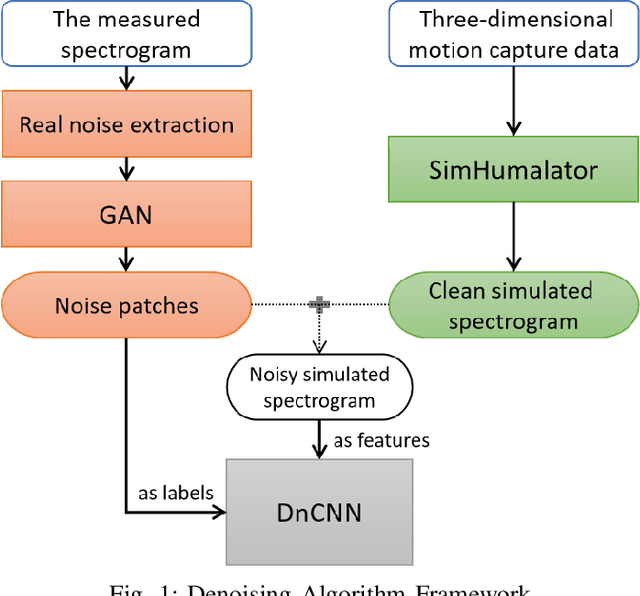
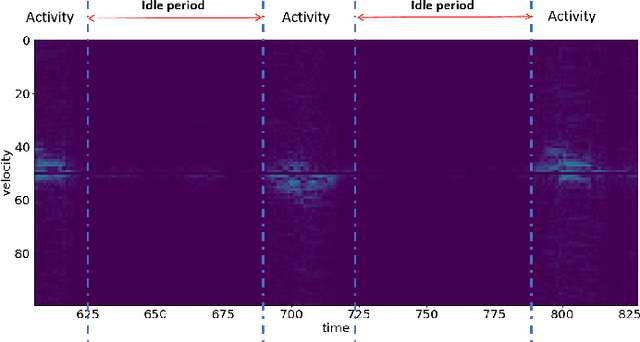
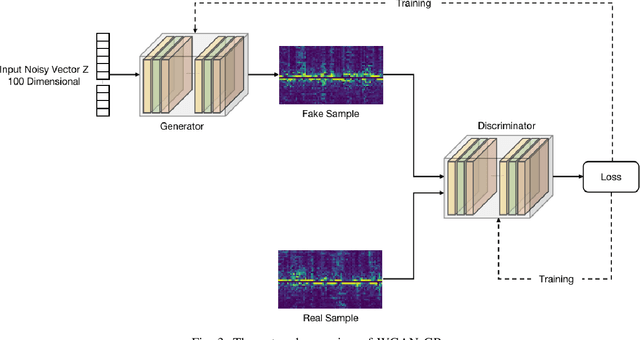
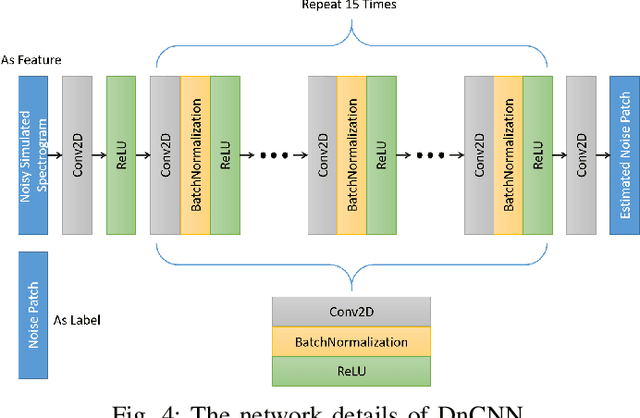
Abstract:Micro-Doppler analysis has become increasingly popular in recent years owning to the ability of the technique to enhance classification strategies. Applications include recognising everyday human activities, distinguishing drone from birds, and identifying different types of vehicles. However, noisy time-frequency spectrograms can significantly affect the performance of the classifier and must be tackled using appropriate denoising algorithms. In recent years, deep learning algorithms have spawned many deep neural network-based denoising algorithms. For these methods, noise modelling is the most important part and is used to assist in training. In this paper, we decompose the problem and propose a novel denoising scheme: first, a Generative Adversarial Network (GAN) is used to learn the noise distribution and correlation from the real-world environment; then, a simulator is used to generate clean Micro-Doppler spectrograms; finally, the generated noise and clean simulation data are combined as the training data to train a Convolutional Neural Network (CNN) denoiser. In experiments, we qualitatively and quantitatively analyzed this procedure on both simulation and measurement data. Besides, the idea of learning from natural noise can be applied well to other existing frameworks and demonstrate greater performance than other noise models.
Sparsity Based Autoencoders for Denoising Cluttered Radar Signatures
Jan 29, 2021



Abstract:Narrowband and broadband indoor radar images significantly deteriorate in the presence of target dependent and independent static and dynamic clutter arising from walls. A stacked and sparse denoising autoencoder (StackedSDAE) is proposed for mitigating wall clutter in indoor radar images. The algorithm relies on the availability of clean images and corresponding noisy images during training and requires no additional information regarding the wall characteristics. The algorithm is evaluated on simulated Doppler-time spectrograms and high range resolution profiles generated for diverse radar frequencies and wall characteristics in around-the-corner radar (ACR) scenarios. Additional experiments are performed on range-enhanced frontal images generated from measurements gathered from a wideband RF imaging sensor. The results from the experiments show that the StackedSDAE successfully reconstructs images that closely resemble those that would be obtained in free space conditions. Further, the incorporation of sparsity and depth in the hidden layer representations within the autoencoder makes the algorithm more robust to low signal to noise ratio (SNR) and label mismatch between clean and corrupt data during training than the conventional single layer DAE. For example, the denoised ACR signatures show a structural similarity above 0.75 to clean free space images at SNR of -10dB and label mismatch error of 50%.
 Add to Chrome
Add to Chrome Add to Firefox
Add to Firefox Add to Edge
Add to Edge